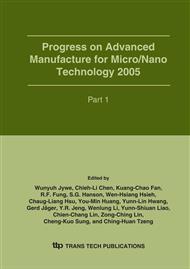p.865
p.871
p.877
p.883
p.889
p.895
p.901
p.907
p.913
A New Knowledge Discovery Model for Extracting Diagnosis Rules of Manufacturing Process
Abstract:
The knowledge obtained from the experience of monitoring manufacturing process is critical to guarantee good products produced at the end of manufacturing line. Recently, many methods have been developed for the described purpose above. In this paper, a new knowledge discovery model based on soft computing is proposed. The proposed model contains a new algorithm Modified Correlation-based Feature Selection (MCFS), a new algorithm Modified Minimum Entropy Principle Algorithm (MMEPA), and Variable Precision Rough Set Model (VP-model). After conducting a real case of monitoring the process of manufacturing industrial conveyor belt, some advantages of the proposed model are that (1) MCFS can quickly identifying and screening irrelevant, redundant, and noisy features for data reduction; (2) MMEPA can objectively construct membership functions of fuzzy sets for fuzzifing the reduced dataset; (3) VP-model can extract causal relationship rules for controlling product quality; (4) Extracted rules by the proposed knowledge discovery model are easily understood and interpretable.
Info:
Periodical:
Pages:
889-894
Citation:
Online since:
January 2006
Authors:
Price:
Сopyright:
© 2006 Trans Tech Publications Ltd. All Rights Reserved
Share:
Citation:


